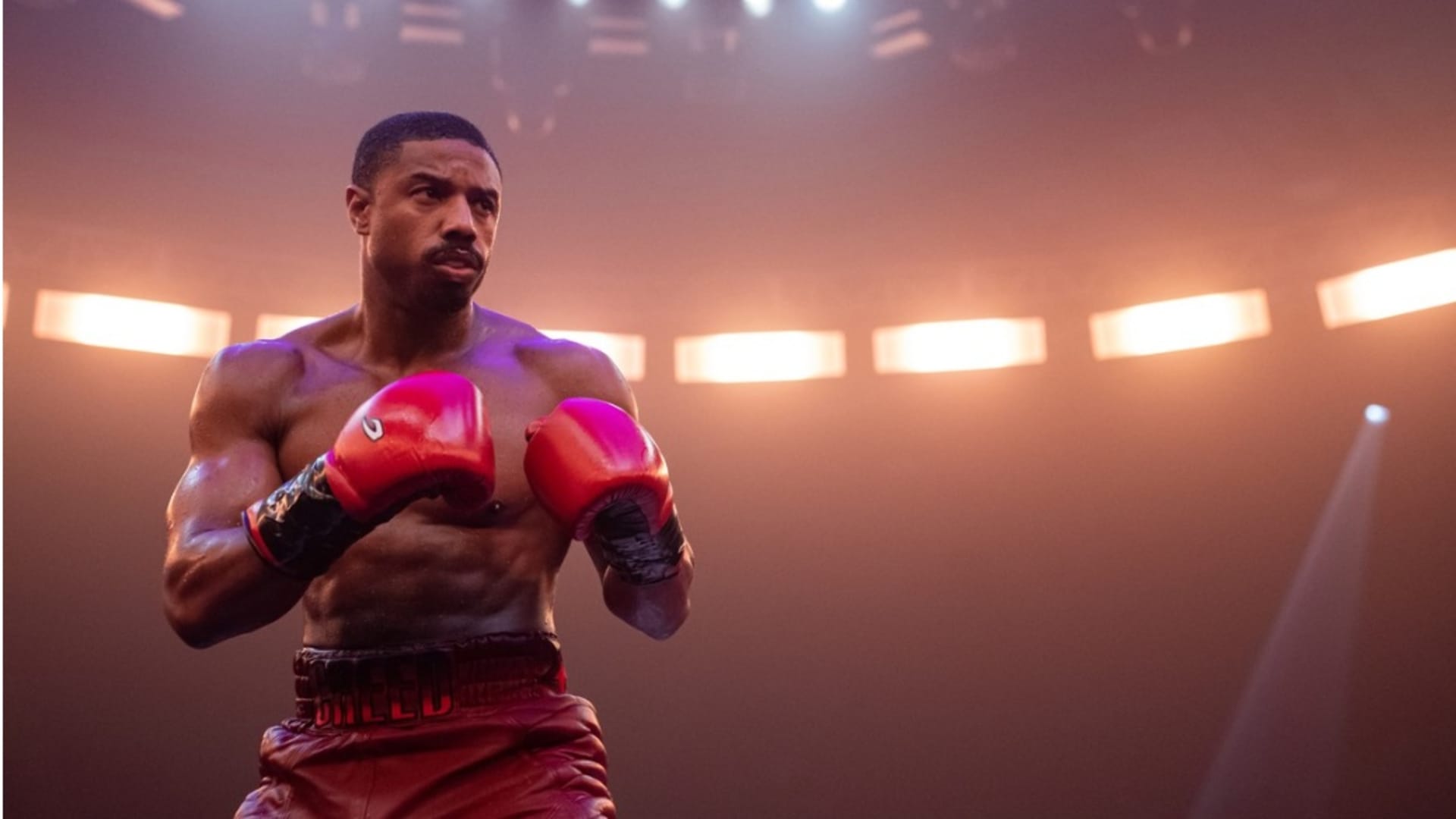Products You May Like
LOS ANGELES — It’s an underdog story for the 21st century.
The Creed series is a Hollywood miracle in many ways. It’s a lucrative spinoff of the beloved, decades-old Rocky series, but it has its own modern style and sensibility.
And, while paying homage to the star and the stories that gave it a foundation, it has flipped the script on an enduring white working-class mythos by highlighting Black talent on both sides of the camera.
Warner Bros.’ upcoming “Creed III,” due in theaters March 3, also sees its lead actor take the helm as director, a move also made by Sylvester Stallone in 1979 with the release of “Rocky II.” The film will be Michael B. Jordan’s directorial debut.
“Michael B. Jordan has worked on some amazing television series and films and I’ve always said that the best film school is being on set,” said Shawn Edwards, a film critic who sits on the board of the Critics Choice Association and co-founded the African American Film Critics Association. “I think it was only a matter of time before [he] jumped behind the camera.”
Jordan’s road to the director’s chair was paved by Ryan Coogler, who wrote and directed the first Creed film, as well as Steven Caple Jr., who directed the second. Coogler, who hadn’t yet released his debut film “Fruitvale Station,” which also starred Jordan, approached Stallone about a Creed spinoff.
Several years later, he finally won him over. Stallone co-starred in the first two movies and co-wrote the “Creed II” screenplay. Stallone was not involved with the third Creed film and declined CNBC’s request for comment.
The first film, 2015’s “Creed,” followed Adonis, the son of Rocky’s longtime rival and later friend, Apollo Creed. The story examined the life of an orphaned boy living in the shadow of a boxing legend and dealing with his own underdog story as he sought to follow in his father’s footsteps and enter the ring.
“Creed” echoed much of the narrative cues of the original Rocky movies, which focused on a so-called “ham-and-egger” from Philly’s white working-class mean streets who becomes a heavyweight contender and, eventually, world champion.
But the new franchise also addressed issues regarding the Black experience and Black masculinity.
“It’s refreshing to see this focus, not on our traditional ways of thinking about Black representation in terms of the past and historical struggles against discrimination and oppression,” said Brandy Monk-Payton, a professor at Fordham University who specializes in Black media representation. “I think they’re embedded in the way in which [the film’s characters] move about the world … but at the same time, it’s not the centerpiece of the story. The focus of the story is this everyman who winds up going through a struggle and triumph.”
That kind of story can only be told when Black artists are part of the production process and possess leadership roles within studios, industry insiders and experts say.
Sheldon Epps, one of the preeminent Black directors across television and theater, said it is only in the last decade or so that he saw a change in the diversity of Hollywood.
“I’ve been around long enough that in certain situations, I’ve been one of the few, or one of the only, Black directors or Black leaders of an arts institution,” he said. “In certain years, the only one on some of the television shows that I’ve done, like ‘Friends’ and ‘Frasier.’ And that was sadly true for many, many years.”
Epps said that slowly changed as more Black directors were hired to helm hourlong dramatic television shows, including Paris Barclay (“Cold Case,” “The West Wing”) and Eric Laneuville (“Lost”). He also pointed to Black auteurs such as Ava DuVernay as people who have risen to positions of power and used that position to uplift others. DuVernay’s series “Queen Sugar” had a policy that only female directors would be hired to work on the show.
“Participation by more artists of color in the process of creating the stories, not just making them, but the writing of them, is essential, because it it broadens the canvas,” Epps said. “Instead of getting a narrow view of Black people, or Latino people or Asian people, because the stories are being written from inside of those worlds we’re getting a much, much broader view of all of the varied communities of our nation.”
And stories about Black protagonists sell tickets.
“The Woman King” snared nearly $100 million worldwide during its run in theaters last year, and Coogler’s two “Black Panther” films, under the Marvel banner, together generated more than $2 billion at the global box office.
Both “Creed” and “Creed II” generated more than $100 million at the domestic box office, according to data from Comscore. And the third film is expected to generate between $25 million and $35 million during its opening weekend.
“It’s broadened the audience,” said Rolando Rodriguez, chairman of the National Association of Theatre Owners. “There’s a specific additional energy that’s brought out within the Hispanic and African American community.”
Rodriguez posits that while Black people make up 13% of the population, Black moviegoers will represent around 20% to 22% of total ticket sales for “Creed III.” Similarly, the Hispanic community equates to around 19% of the population, but represents 25% to 28% of movie tickets sold.
“That really helps the overall movie, because it’s not taking away from other audiences,” he said, noting that other demographic groups will still turn up for the film, so it’s not a replacement of those audiences.
“I get excited about it because it’s nice to see some of these diverse movies where these young men and women can actually see themselves on the screen being represented as leading actors and actresses,” Rodriguez added. “That you can be somebody that can become, hopefully, a CEO or a movie star, producer or director … I think it sends a very important social message.”
